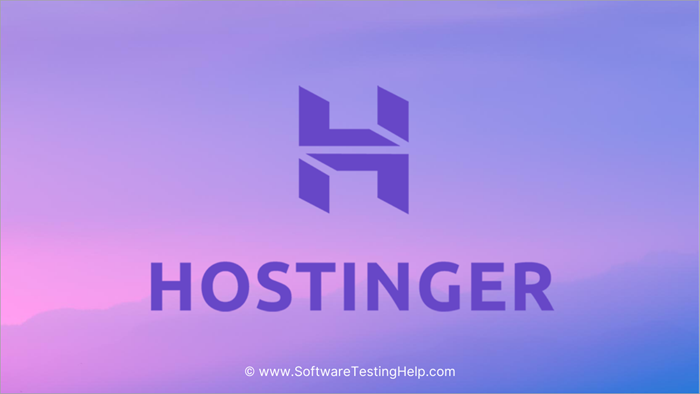Evolution of Domain Extensions: Maximizing the Potential of New gTLDs
- Post
- August 8, 2023
- Domain Names, Internet & Web Services, Web Hosting
- 0 Comments
In the ever-evolving landscape of the internet, domain names serve as the virtual addresses, guiding users to their desired online destinations. The domain name system (DNS) has undergone a remarkable transformation over the years, with the introduction of new generic top-level domains (gTLDs) breathing fresh life into the digital realm. In this comprehensive exploration, we delve into the fascinating journey of domain extensions, unveiling the power and possibilities of the new gTLDs.
Navigating the Digital Landscape
The digital world we inhabit is a vast and intricate web of interconnected information, and domain names act as its signposts. Imagine the internet as a sprawling metropolis, with each website being a unique building. Just as addresses help us locate physical places, domain names guide us to websites. However, the traditional domain extensions like .com, .org, and .net are akin to limited street names in a city. The emergence of new gTLDs has expanded the address space, enabling a new wave of creativity and expression on the web.
Understanding Domain Names and Their Significance
Before we dive into the evolution of gTLDs, let’s grasp the concept of domain names. A domain name is your website’s identity, an online representation of your brand or entity. It consists of two main parts: the second-level domain (SLD), which is your unique name, and the top-level domain (TLD), which is the extension that follows the SLD. The TLD carries essential information about the website, such as its purpose, origin, or industry. The gTLDs, in particular, play a pivotal role in shaping the online experience.
A Brief History of Domain Extensions
The genesis of domain extensions can be traced back to the 1980s, with the creation of the first gTLDs: .com, .org, .net, .gov, and .edu. These were intended to categorize websites based on their nature. However, the digital landscape has evolved dramatically since then, necessitating a broader range of domain extensions to accommodate diverse purposes. This led to the introduction of country-code TLDs (ccTLDs) like .uk, .jp, and .ca, which catered to specific geographic regions.
The New Era of gTLDs: Diversity and Innovation
The turn of the 21st century witnessed a groundbreaking shift with the introduction of new gTLDs. These extensions ventured beyond the conventional boundaries, offering organizations and individuals the opportunity to align their web addresses more closely with their identities or industries. The likes of .tech, .blog, .app, and .design opened the doors to a world of possibilities, allowing businesses to showcase their expertise and engage with their audiences on a more personal level.
Benefits of Embracing New gTLDs
Enhanced Brand Identity: New gTLDs enable brands to craft unique and memorable web addresses that resonate with their offerings. A creative extension can convey a strong brand message, making it easier for users to remember and associate with the business.
Improved SEO and Visibility: While the impact of domain extensions on SEO is debated, choosing a relevant gTLD can enhance the user experience and indirectly contribute to higher search rankings. A clear and meaningful extension can attract clicks and improve click-through rates.
Industry Relevance: Specific gTLDs like .restaurant, .photography, and .travel establish instant industry context, helping visitors understand the nature of the website before even clicking on the link.
Availability and Choice: With traditional TLDs often saturated, new gTLDs offer a broader range of available names. This is especially beneficial for startups or niche businesses seeking a distinct online presence.
Localization and Global Reach: For businesses targeting specific regions, country-code gTLDs can foster trust and relevance among local audiences, leading to stronger connections and engagement.
As the digital landscape continues to evolve, selecting the right gTLD requires careful consideration. Businesses must balance creativity with clarity, ensuring that their chosen extension resonates with their brand while conveying its purpose. A law firm, for instance, may find .legal to be an ideal choice, whereas a restaurant could opt for .dining. The possibilities are limited only by imagination.
Navigating the Domain Extension Landscape
Future Prospects and Beyond
The domain extension saga is far from over. As technology advances and industries adapt, we can expect even more innovative gTLDs to emerge. The rise of artificial intelligence, augmented reality, and virtual reality could pave the way for extensions that define these cutting-edge sectors. Embracing these extensions could position businesses at the forefront of technological trends and provide a competitive edge.
Final Words: Crafting Your Digital Identity
In a digital landscape teeming with countless websites, the choice of a domain extension holds significant weight. The evolution of gTLDs has revolutionized the way we approach online addresses, empowering businesses to express their identities and connect with audiences like never before. As you embark on your digital journey, remember that your domain name is more than just an address—it’s a reflection of your brand’s essence, values, and aspirations. Choose wisely, and let your domain extension speak volumes about your online presence.
Commonly Asked Questions
Q1: What is a domain name, and why is it essential?
A domain name is the unique address that directs users to your website. It’s crucial because it represents your online identity and helps users find you amidst the vast digital landscape.
Q2: How do gTLDs differ from traditional domain extensions?
While traditional extensions like .com are broad and generic, gTLDs offer industry-specific, creative, and memorable options that can better align with your brand or purpose.
Q3: Can gTLDs impact SEO rankings?
While gTLDs themselves may not directly affect SEO, they can indirectly improve user experience, click-through rates, and brand recognition, contributing to better search rankings.
Q4: Are country-code TLDs relevant for global businesses?
Absolutely. Country-code TLDs can instill trust among local audiences, enhance localization efforts, and establish stronger connections in specific regions.
Q5: How can I choose the right gTLD for my business?
Consider your brand identity, industry, target audience, and long-term goals. A well-chosen gTLD can enhance your online presence and set you apart in a competitive digital landscape.



